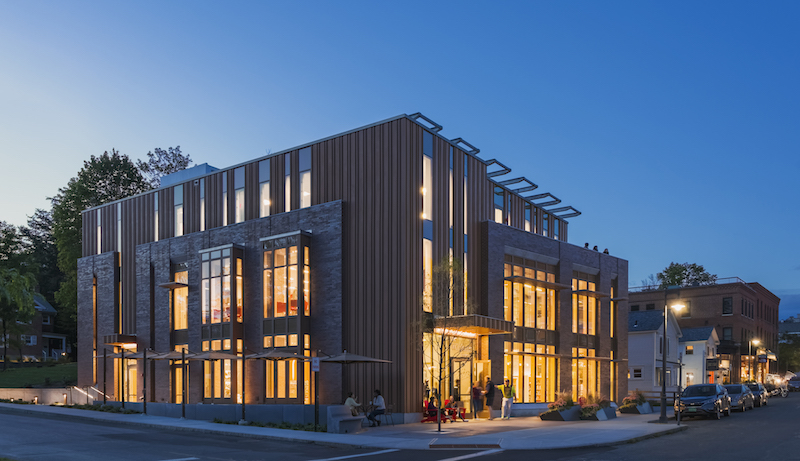The new Williams College campus bookstore includes everything you’d expect in a college bookstore plus a coffee shop, a dedicated area that can be sanctioned off for events and special talks, indoor/outdoor leisure spaces for the community, and a sustainable design that earned LEED Platinum designation.
The CambridgeSeven-designed building used local materials such as granite and bricks for the building’s exterior. A glazing to wall ratio of 24%, insulated glass with integral wood louvers, and an exterior brise soleil for enhanced thermal protection help the building achieve an Energy Use Intensity (EUI) rating of 39. The thicker than average, tightly sealed, insulated walls also help the bookstore achieve the EUI that is 41% better than baseline.
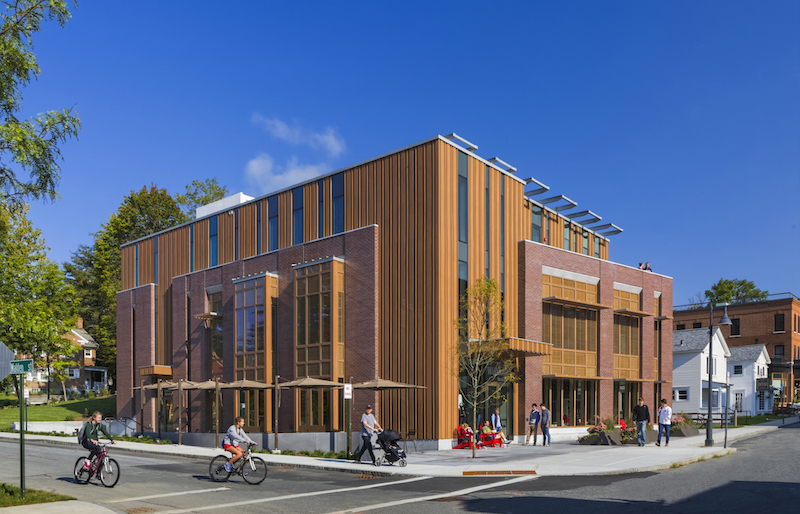 Courtesy Williams College.
Courtesy Williams College.
A stormwater management system helps keep stormwater runoff equal to the pre-development levels. This system includes a rain garden, deep sump catch basins, and underground detention to capture stormwater from roofs and new paving before it runs off the site.
See Also: Best in library design 2018: Six projects earn AIA/ALA library awards
The building does not use any gas, only electricity. As such, the PV array on the roof was designed to form a dynamic part of the building’s presence on Spring Street.
Other features include birch plywood ceilings and fabric paneled hidden doors to section off the café space for programming. In addition to the building design, CambridgeSeven also designed the building’s furniture and finishes.
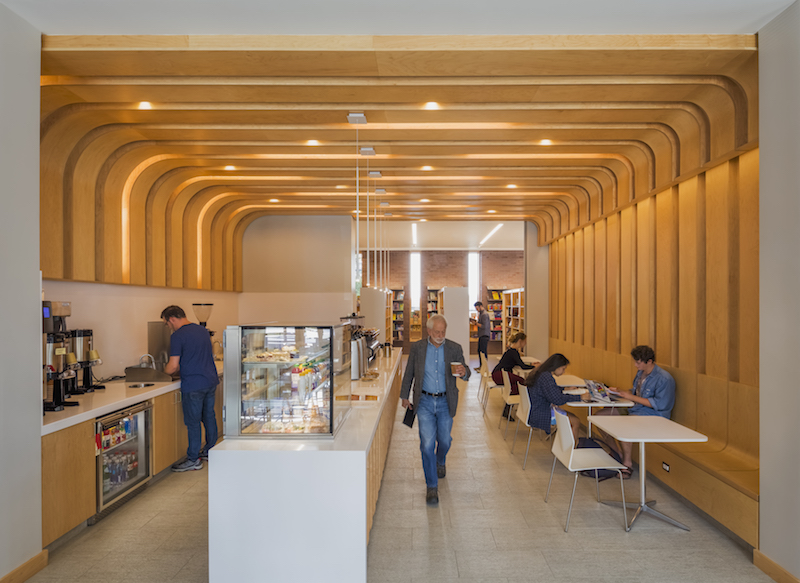 Courtesy Williams College.
Courtesy Williams College.
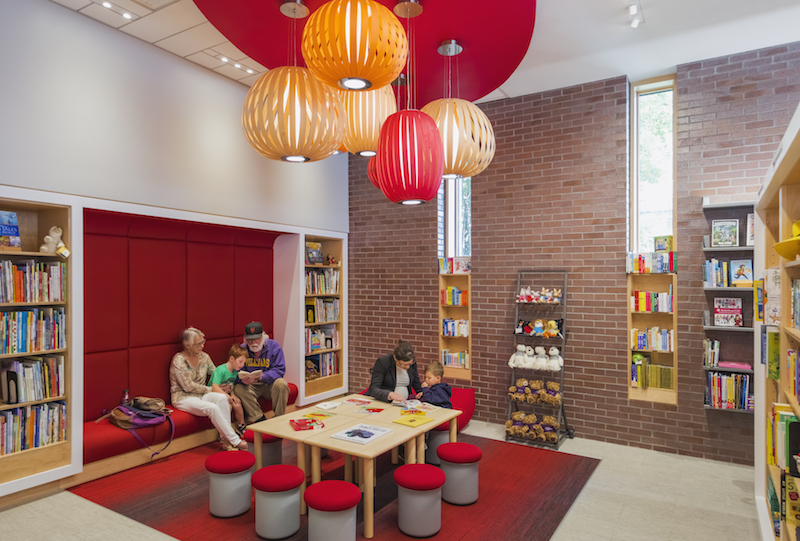 Courtesy Williams College.
Courtesy Williams College.
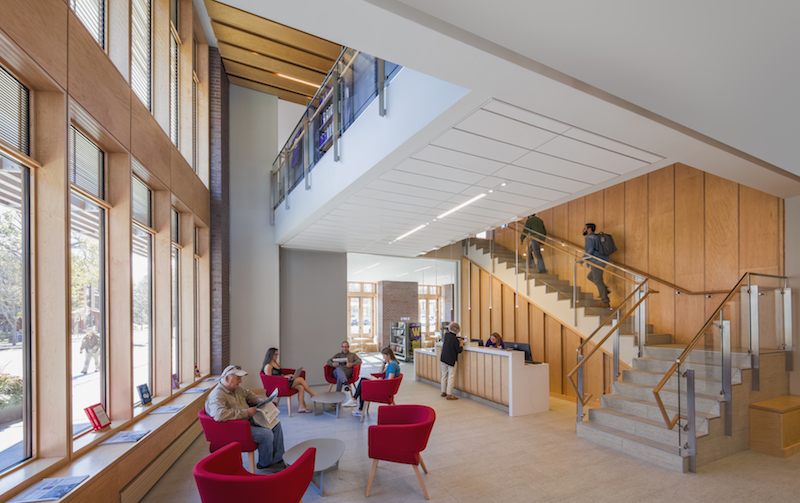 Courtesy Williams College.
Courtesy Williams College.
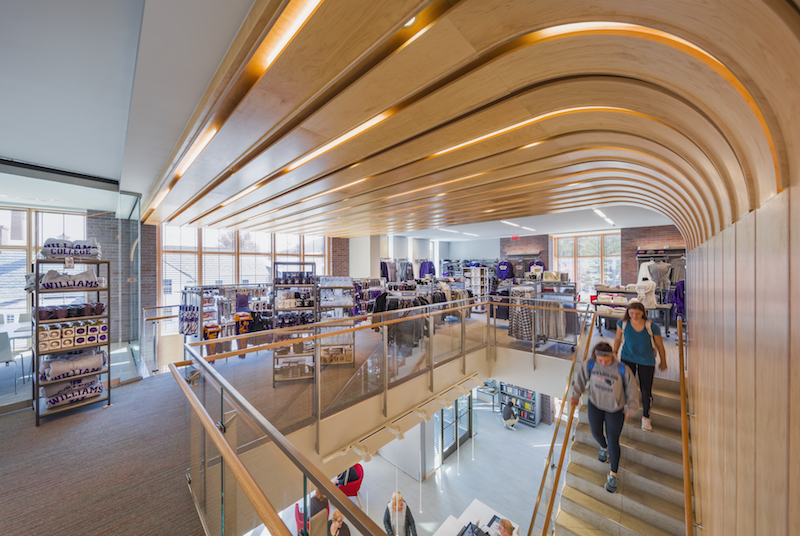 Courtesy Williams College.
Courtesy Williams College.
 Courtesy Williams College.
Courtesy Williams College.
 Courtesy Williams College.
Courtesy Williams College.
Related Stories
| Aug 11, 2010
Living and Learning Center, Massachusetts College of Pharmacy & Health Sciences
From its humble beginnings as a tiny pharmaceutical college founded by 14 Boston pharmacists, the Massachusetts College of Pharmacy & Health Sciences has grown to become the largest school of its kind in the U.S. For more than 175 years, MCPHS operated solely in Boston, on a quaint, 2,500-student campus in the heart of the city's famed Longwood Medical and Academic Area.
| Aug 11, 2010
Giants 300 University Report
University construction spending is 13% higher than a year ago—mostly for residence halls and infrastructure on public campuses—and is expected to slip less than 5% over the next two years. However, the value of starts dropped about 10% in recent months and will not return to the 2007–08 peak for about two years.
| Aug 11, 2010
Team Tames Impossible Site
Rensselaer Polytechnic Institute, the nation's oldest technology university, has long prided itself on its state-of-the-art design and engineering curriculum. Several years ago, to call attention to its equally estimable media and performing arts programs, RPI commissioned British architect Sir Nicholas Grimshaw to design the Curtis R.
| Aug 11, 2010
Setting the Green Standard For Community Colleges
“Ohlone College Newark Campus Is the Greenest College in the World!” That bold statement was the official tagline of the festivities surrounding the August 2008 grand opening of Ohlone College's LEED Platinum Newark (Calif.) Center for Health Sciences and Technology. The 130,000-sf, $58 million community college facility stacks up against some of the greenest college buildings in th...
| Aug 11, 2010
University of Arizona College of Medicine
The hope was that a complete restoration and modernization would bring life back to three neoclassic beauties that formerly served as Phoenix Union High School—but time had not treated them kindly. Built in 1911, one year before Arizona became the country's 48th state, the historic high school buildings endured nearly a century of wear and tear and suffered major water damage and years of...
| Aug 11, 2010
Cronkite Communication School Speaks to Phoenix Redevelopment
The city of Phoenix has sprawling suburbs, but its outward expansion caused the downtown core to stagnate—a problem not uncommon to other major metropolitan areas. Reviving the city became a hotbed issue for Mayor Phil Gordon, who envisioned a vibrant downtown that offered opportunities for living, working, learning, and playing.


